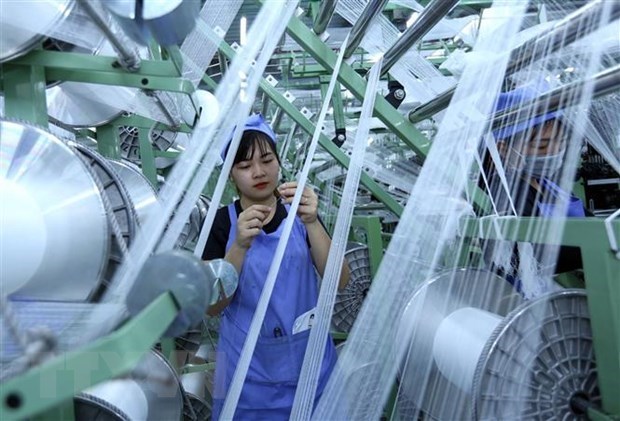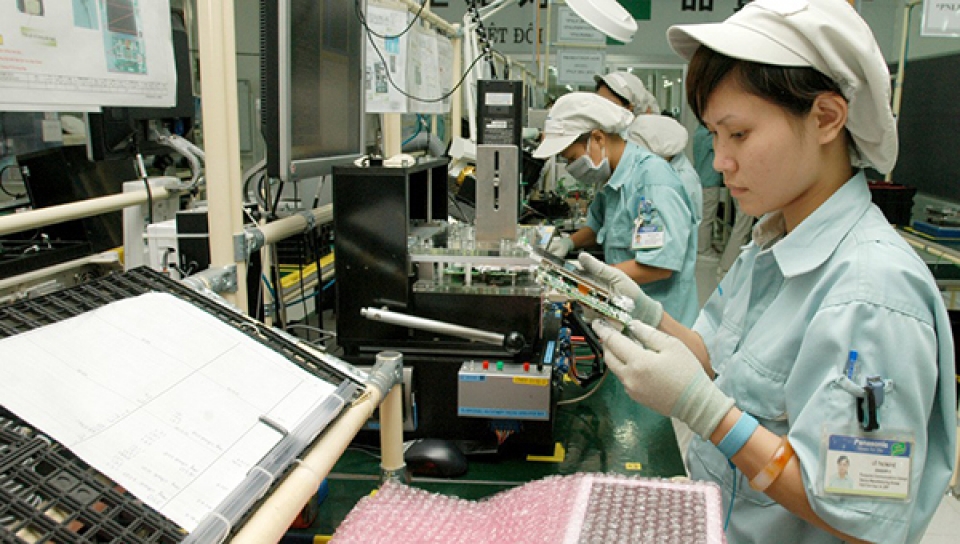 |
The knitted fabric factory of the Best Pacific Vietnam Co. Ltd, invested by Hong Kong (China), in the Vietnam-Singapore Industrial Park in Hai Duong province |
ADB Vietnam’s chief economistNguyen Minh Cuong affirmed in an interview granted to Vietnam News Agency thatthere are many reasons for ADB to believe in the growth potential of Vietnam.
He said the forecast for Vietnamwas based on the growth of domestic consumption, plus strong increases inexport turnover and foreign investment in the past 11 months. Total foreign tradeof Vietnam could reach 500 billion USD this year or even higher.
The bank also noticedthe remarkable improvement in Vietnam’s business environment over the pastyears, along with the trend of foreign investment shifting from China to othermarkets, and in the context of the US-China trade dispute, Vietnam is really anattractive market for investors.
Besides, Vietnam has madenoteworthy improvement in competitiveness, which made it easy to understand whythe foreign investment flow into Vietnam is rising strongly.
Another important reason is the macro-economicstability in Vietnam, with low inflation rate thanks to the State Bank’sflexible and appropriate monetary policies which well support growth.
According to the expert, thoughpublic investment disbursement may remain slow, authorized agencies have putforth some drastic measures and the pace is expected to accelerate.
Asked to comment on concerns thatthe reform process in Vietnam is slowing down, the ADB expert said the reformis still underway effectively, adding that he hopes for stronger measures insome aspects, for example the rearrangement of State-owned enterprises, inwhich the current progress has not matched expectations and targets set by theState.
In the finance-banking sector, despitesome positive changes such as the settlement of bad debt or credit risk controlin accordance with Basel II-stand, the reform pace is under expectation,calling for stronger measures, especially in handling bad debt.
Cuong affirmed that there are notmany reasons for us to worry about Vietnam’s reform progress, explaining thatbesides internal factors, Vietnam’s reform is driven by many external factors.
In the 2019-2020 period, theexternal factors are clear, he said, citing the country’s commitments to theComprehensive and Progressive Agreement for Trans-Pacific Partnership (CPTPP)and the Vietnam-European Union Free Trade Agreement.
Therefore, the expert was of theopinion that the driver for reform will continue to strengthen in 2020.
Talking about solutions topromote the development of the private sector, the ADB expert said theGovernment plays a very important role.
Accounting for more than 96percent of the total number of enterprises nationwide, the private sector inVietnam is very diverse, with household businesses (which make up a big portionand contributing about 30 percent of the national GDP), small- and medium-sizedenterprises (SMEs) and big private groups.
Cuong noted that the past decadehas seen a strong development of large-scale private groups. The question ishow to enable those large-scale private groups to create big breakthroughs forthe economy while ensuring the extensive and fair development of SMEs and householdbusinesses, he said, stressing that that is the task for institutions andpolicies.
According to the expert, largeprivate groups should realize that when Vietnam joins bilateral andmultilateral FTAs which require the country to create a transparent and fairplayground for domestic and foreign enterprises, there will be no preferentialtreatment or specific policies for domestic private companies. Therefore, the privatesector should realize advantages and difficulties and learn how to optimize opportunitiesto join the global value chains.
For SMEs and householdbusinesses, Cuong said while many used to say this sector faces difficultiesand obstacles in accessing financial credit, reality and comparison with othercountries in the region and the world show that regulations on collateral, feasiblebusiness plans and many other requirements of banks are similar be in anycountry.
He expressed his personal viewthat financial credit access is not the basic issue. Instead, it is the firm’scapacity to absorb capital, which depend on the firm’s administration capacity,workers’ skills, which requires attention of firms, Cuong said./.VNA

Vietnam revises GDP in line with international practices
The revision of the size of Vietnam’s gross domestic product (GDP) for 2011-2017 is in line with international practices and serves as a foundation for the country's development path in the next 10 years, an official has said.

Vietnam 2017 GDP expands US$56 billion after revision
After revision, Vietnam’s GDP grew an average of 25.4% annually in the 2010 – 2017 period, in which 2011 recorded the highest growth rate of 27.3%.
 The Asian Development Bank has revised up its forecast of Vietnam’s GDP growth for 2019 and 20202 from 6.8 percent to 6.9 percent and 6.7 percent to 6.8 percent, respectively, in contrary with projections for Asia.
The Asian Development Bank has revised up its forecast of Vietnam’s GDP growth for 2019 and 20202 from 6.8 percent to 6.9 percent and 6.7 percent to 6.8 percent, respectively, in contrary with projections for Asia.